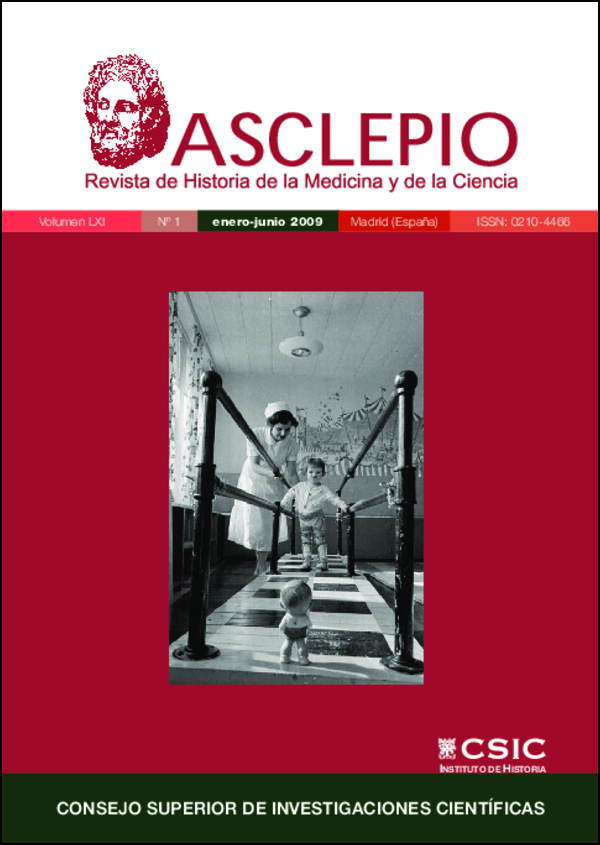Consolidating the medical model of disability: on poliomyelitis and the constitution of orthopedic surgery and orthopaedics as a speciality in Spain (1930-1950)
DOI:
https://doi.org/10.3989/asclepio.2009.v61.i1.274Keywords:
History of Poliomyelitis, Polio, History of disabilities, Medical Specialization, History of OrthopaedicsAbstract
At the beginning of the 1930s, various factors made it necessary to transform one of the institutions which was renowned for its work regarding the social reinsertion of the disabled, that is, the Instituto de Reeducación Profesional de Inválidos del Trabajo (Institute for Occupational Retraining of Invalids of Work). The economic crisis of 1929 and the legislative reform aimed at regulating occupational accidents highlighted the failings of this institution to fulfil its objectives. After a time of uncertainty, the centre was renamed the Instituto Nacional de Reeducación de Inválidos (National Institute for Retraining of Invalids). This was done to take advantage of its work in championing the recovery of all people with disabilities.
This work aims to study the role played in this process by the poliomyelitis epidemics in Spain at this time. It aims to highlight how this disease justified the need to continue the work of a group of professionals and how it helped to reorient the previous programme to re-educate the «invalids». Thus we shall see the way in which, from 1930 to 1950, a specific medical technology helped to consolidate an «individual model» of disability and how a certain cultural stereotype of those affected developed as a result. Lastly, this work discusses the way in which all this took place in the midst of a process of professional development of orthopaedic surgeons.
Downloads
Downloads
Published
How to Cite
Issue
Section
License
Copyright (c) 2009 Consejo Superior de Investigaciones Científicas (CSIC)

This work is licensed under a Creative Commons Attribution 4.0 International License.
© CSIC. Manuscripts published in both the print and online versions of this journal are the property of the Consejo Superior de Investigaciones Científicas, and quoting this source is a requirement for any partial or full reproduction.
All contents of this electronic edition, except where otherwise noted, are distributed under a Creative Commons Attribution 4.0 International (CC BY 4.0) licence. You may read the basic information and the legal text of the licence. The indication of the CC BY 4.0 licence must be expressly stated in this way when necessary.
Self-archiving in repositories, personal webpages or similar, of any version other than the final version of the work produced by the publisher, is not allowed.















